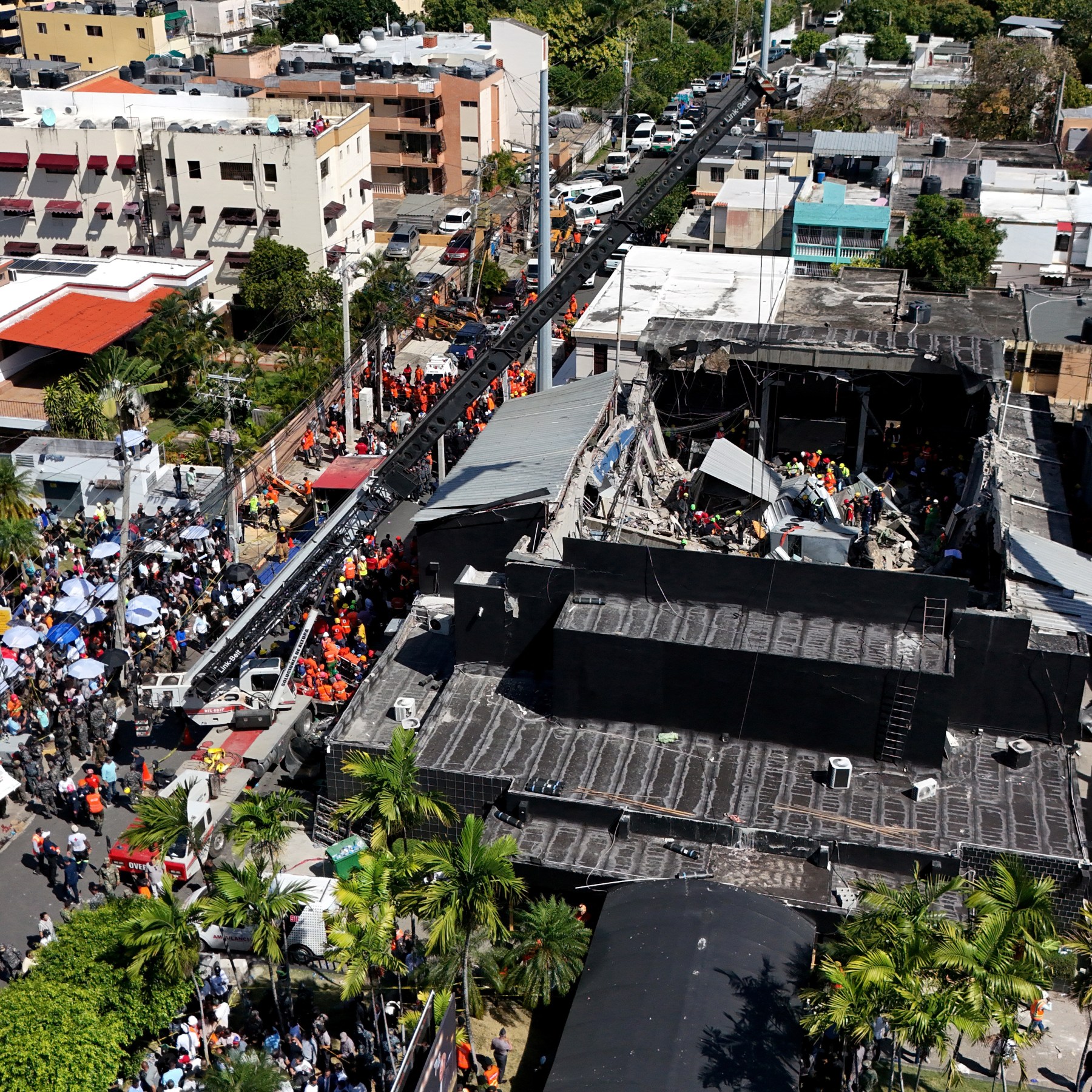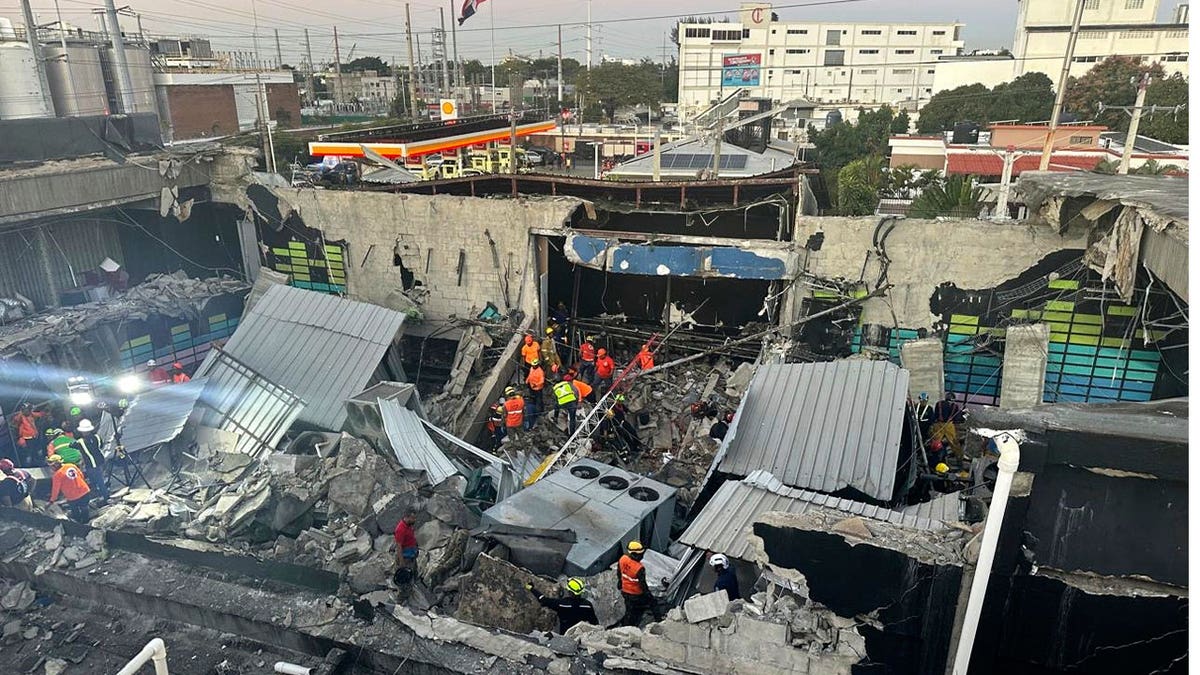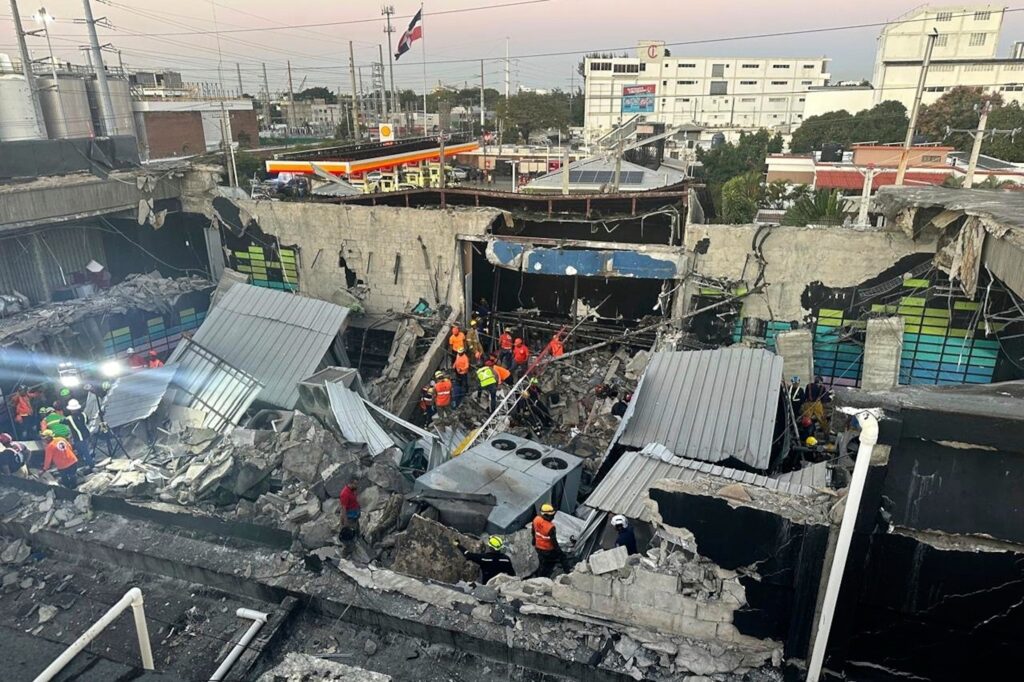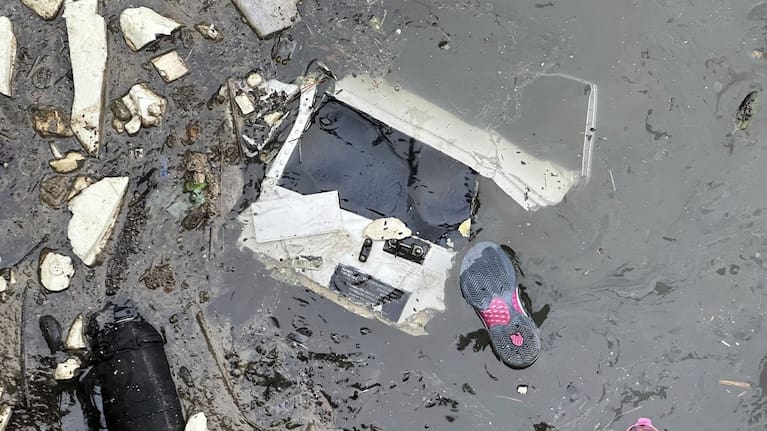Now Reading: Heartbreaking Tragedy: Merengue Star and MLB Players Among 124 Dead in Club Collapse
-
01
Heartbreaking Tragedy: Merengue Star and MLB Players Among 124 Dead in Club Collapse

Heartbreaking Tragedy: Merengue Star and MLB Players Among 124 Dead in Club Collapse
In a devastating tragedy that has shocked the Dominican Republic and the entertainment world, at least 124 people have lost their lives after the roof of the popular Jet Set nightclub suddenly collapsed. Among the victims were beloved merengue legend Rubby Perez and former Major League Baseball stars Octavio Dotel and Tony Blanco.
The catastrophic incident occurred shortly after midnight on Tuesday, April 8, transforming what should have been a night of music and celebration into one of the country’s worst disasters in recent memory. President Luis Abinader has declared three days of national mourning as rescue efforts continue.

Merengue Icon Rubby Perez Among Those Lost in the Disaster
Legendary 69-year-old Dominican merengue singer Rubby Perez was performing on stage when disaster struck. According to eyewitnesses, there was a sudden blackout before the roof came crashing down on the packed venue. Perez’s manager confirmed the beloved musician’s death, stating that his team is ‘waiting for the children to reach an agreement for the funeral.’
In a heartbreaking account, Perez’s daughter Zulinka told reporters that while she managed to escape after the roof collapsed, her father was not so fortunate. The singer, known for his charismatic performances and contributions to merengue music, was a national treasure in the Dominican Republic.
:max_bytes(150000):strip_icc()/RUBBY-PEREZ-performing-040825-1-4e267642e6f54f5cae6900a7084db1dc.jpg)
Baseball Stars Lost in the Tragedy: Heroism and Heartbreak
The baseball community is reeling from the loss of two prominent former MLB players. Octavio Dotel, 51, who won a World Series championship with the St. Louis Cardinals in 2011, was initially rescued alive but tragically died from his injuries while being transported to the hospital.
In a particularly poignant story of heroism, Tony Blanco, 43, who previously played for the Washington Nationals, lost his life while attempting to save his friend and fellow former baseball player Esteban German from falling debris. Blanco’s selfless act cost him his life, though German, 47, miraculously survived the ordeal.
Dotel’s brother Angel shared with El Nuevo Diario newspaper that rescuers had heard the former pitcher screaming for help, but he sadly succumbed to his injuries before he could be fully extracted from the rubble.
:max_bytes(150000):strip_icc():focal(762x379:764x381)/Tony-Blanco-dies-nightclub-colapse-040824-bd83a381d5e64c9397ab811817dd17ad.jpg)
A Night of Entertainment Turns to Tragedy
Local media reports indicate that between 500 and 1,000 people were inside the Jet Set nightclub when the roof collapsed at approximately 12:44 AM. The venue reportedly has a capacity for 700 people seated and around 1,000 standing.
The disaster claimed victims from all walks of life, including Nelsy Cruz, the governor of the Monte Cristi municipality. President Luis Abinader personally visited the scene and has been closely monitoring the rescue efforts, which after more than 24 hours have sadly shifted focus from finding survivors to recovering bodies.
Rising Death Toll and Ongoing Rescue Efforts
The scale of the tragedy became increasingly apparent throughout Tuesday as the death count continued to rise. What initially began as a report of 15 casualties grew to 98 by early Wednesday, according to Juan Manuel Mendez, director of the Emergency Operations Center.
By Wednesday afternoon, authorities had confirmed at least 124 deaths, with expectations that this number may still increase as rescue operations continue. “As long as there is hope for life, all authorities will be working to recover or rescue these people,” Mendez stated earlier in the rescue efforts.

Nation in Mourning: The Aftermath and Questions
The catastrophe has plunged the Dominican Republic into deep mourning, with President Abinader declaring three days of national grief. The disaster raises serious questions about building safety regulations and enforcement in the country, particularly for entertainment venues that regularly host large crowds.
As families search for loved ones and the country grapples with this immense loss, tributes have been pouring in for the victims, especially the high-profile figures whose lives were cut short. The entertainment and sports communities worldwide have expressed their shock and condolences.
This tragedy marks one of the deadliest nightclub disasters in recent history and will likely lead to significant scrutiny of safety standards for public venues not only in the Dominican Republic but potentially across the Caribbean and beyond.

As investigations into the cause of the collapse continue, the Dominican Republic faces the difficult task of mourning its dead while seeking answers to prevent such a devastating loss of life from happening again.










